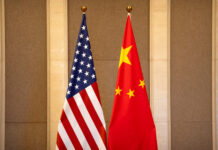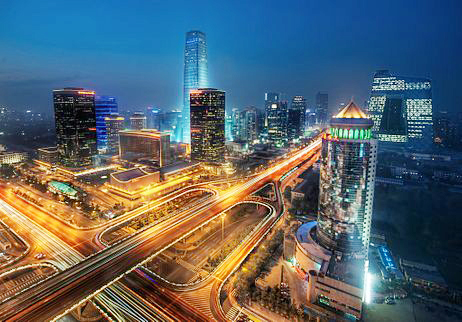My first anxiety to know more about China came through my readings of Bertrand Russell. Russell, one of the greatest minds of the 20th century, had visited China on a lecture trip in 1920, staying there for nine months, visiting many places and people. In this trip he delivered several lectures and received immense love, adulation and admiration. Despite the fact that Russell’s observations and analysis of China’s cultural, demographic and economic life are nearly 100 years old, it redounds to his incisively brilliant mind that most of what he observed then is not only correct even today, but most of his predictions about China are incredibly true. Russell’s views of China were very balanced. He looked at their culture with empathy and rightly predicted that the so-called “opium-eaters” of the 19th century would one day become a superpower of the world.
If the current transformation continues, China with its economic and military might will to able to threaten the countries in the region and the West. The closer ties with Russia have already resulted in a strategic relationship that is designed to counter the influence of the USA. Being a nuclear power and with its high-technology economic system, China has set the foundation that will likely ensure that it is much stronger than the former USSR and perhaps even more powerful than the USA
In days of antiquity, that is, several centuries before the birth of Christ, China had excelled in mechanics, hydraulics and mathematics. Mercantilism was frowned upon in the Confucian system, and since China had its own very vast land, the Chinese hardly felt the need to go out of their country for livelihood or trade. Hence China remained shrouded in mystery, and was generally thought to be a fabled land. China had no interactions with countries outside its territories, and yet the Chinese were the inventors of papermaking, the compass, gunpowder and printing among other things, sufficient to change the world civilization.
By opening to free market reforms in 1979, China opened up to foreign trade and investment, and became the world’s fastest-growing economies, with real annual gross domestic product (GDP) growth averaging 9.5 percent through 2018, a pace described by the World Bank as “the fastest sustained expansion by any country.”
Prior to Deng Xiaoping’s economic reforms in the early 1980’s, most Chinese lived in poor, rural communities where job opportunities were limited to very inefficient agriculture. Poverty was the norm, not the exception.
The Chinese government promulgated a series of major economic policies, such as energy saving, industrial adjustment and revitalization plan, technological innovation, and regional economic development plan. All these policies have given a boost to the Chinese economy.
Since the initiation of policy reforms in 1978, the Chinese economy has been in rapid growth. From 1978 to 2007, the average growth rate of China’s per capita GDP was 8.6 percent per annum, and until now it has not shown any signs of slowing down.
From 2000 to 2007, the average growth rate was 9.2 percent per annum. China has started to eliminate poverty since 1978. What’s more, the transformation from planned economy to market economy was very difficult in the early stage of reforms. The first stage of the economic reform concentrated on rural areas from 1978 to 1984. Through the 1990s, China began to record rapid growth rates and joined the World Trade Organization in 2001 which gave it another jolt. By 1985, they hit $25 billion and 18 years later exports valued $4.3 trillion, making China the world’s largest trading nation in goods.
Economists generally attribute much of China’s rapid economic growth to two main factors: large-scale capital investment (financed by large domestic savings and foreign investment) and rapid productivity growth. As a result, China’s gross savings as a percentage of GDP is the highest among major economies.
China’s economy has enjoyed 30 years of explosive growth, making it the world’s largest. Its success was based on a mixed economy that incorporated limited capitalism within a command economy. The Chinese government’s spending has significantly contributed to its growth. Recently published economic data showed that China logged 2.3 percent growth for 2020, becoming the only major economy that grew during a year when the virus exacted a devastating global toll. China’s GDP surpassed a milestone in 2020, topping 100 trillion Yuan, or about $15 trillion.
However, Covid-19 was still a major drain on growth in 2020, with nationwide shutdowns of factories and manufacturing plants forcing economic growth down to its slowest rate for four decades. China’s manufacturing sector appears to have recovered, with data at the
beginning of this year showing a 7.3 percent increase in industrial output.
China’s economy grew a record 18.3 percent in the first quarter of 2021 compared to the same quarter the year before. It’s the biggest jump in GDP since China started keeping quarterly records in 1992. China’s GDP was slightly larger than Germany’s in 2007; however, by 2017, China’s $12.2 trillion-economy became larger than those of Germany, UK, France and Italy combined. In 2018, the IMF reiterated its forecast that China will overtake the US in terms of nominal GDP by the year 2030
It is clear that China’s economic and military transformation has been aimed at challenging the balance of power that has existed in the region since World War Two. China has maintained its hegemony through its territorial claims in the South China Sea and in its recent actions against Taiwan. A more aggressive and expansionist policy may occur as China faces more pressure to provide food and resources for one quarter of the world’s population.
If the current transformation continues, China with its economic and military might will to able to threaten the countries in the region and the West. The closer ties with Russia have already resulted in a strategic relationship that is designed to counter the influence of the USA. Being a nuclear power and with its high-technology economic system, China has set the foundation that will likely ensure that it is much stronger than the former USSR and perhaps even more powerful than the USA.





















